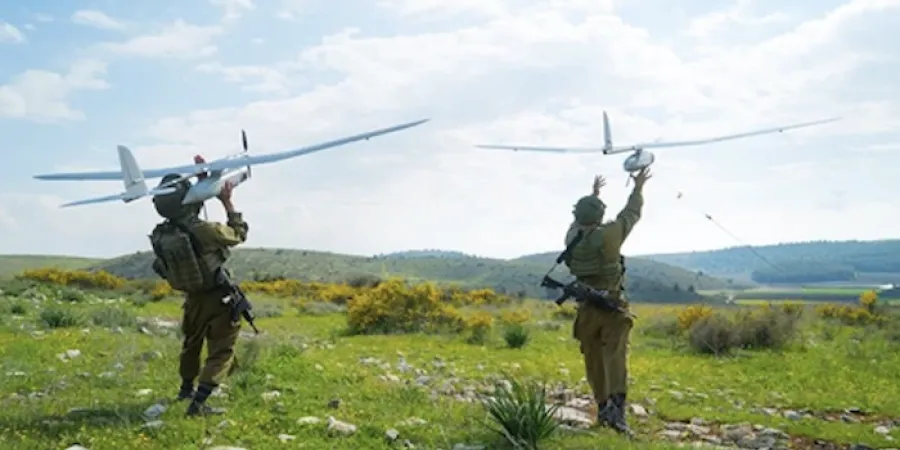Israel finally admits IDF uses attack drones
Better late than never: The Israeli military censor lifted a decades-long ban and now fully admits to harnessing its advanced capabilities to strike enemy targets
Mandi Kogosowski
| 21/07/2022
Better late than never: yesterday (Wednesday), the IDF Military Censor lifted a years-long media ban on reporting that Israel has been employing armed drones / UAVs to strike enemy targets, thus ending the longstanding Israeli policy of ambiguity on the matter.
“We have found that there is no impediment to publish the IDF’s use of attacking drones as part of its operational activities,” said the official censor notice, of what ABC news referred to as “one if its worst-kept secrets.”
Up until now, Israeli press would report on the country’s advances drone capabilities for purposes of surveillance, intelligence gathering, navigation etc.
Foreign press, however, has been reporting on these advanced IDF capabilities for years, and they have also been featured at international arms and defense shows around the world – albeit, while the companies themselves have been careful to blur those advanced offensive capabilities in their press releases and presentations. Israeli drones are also in high demand overseas and sold to Israeli allies – old and new.
So what do we know (officially, at least) about Israeli drones? They are divided into upper, intermediate and lower tier. The upper tier drones include IAI’s Eitan (Heron TP), which was incorporated into the IAF in 2010. It can reach a maximum altitude of 40,000 feet, is 15 meters long with a 26-meter wingspan, and can carry up to one ton of fuel and systems.
The intermediate tier drones, which can reach an altitude of 20,000 feet, include the Hermes 450, Hermes 900 (Elbit Systems) and Shoval (IAI), which are designed for extended periods of flight time and support air, sea and ground forces. The lower tier drones include the Skylark1 (Elbit Systems), which weigh 10 kg can soar up to 5,000 feet. These drones are mostly used by the IDF ground forces.
While these drones have reportedly been used to target many terrorists in the Gaza Strip, Lebanon and Syria over the past three decades, Israel has also come under quite a bit of international criticism for using its drones, especially over civilian populations.
Better late than never: The Israeli military censor lifted a decades-long ban and now fully admits to harnessing its advanced capabilities to strike enemy targets
Better late than never: yesterday (Wednesday), the IDF Military Censor lifted a years-long media ban on reporting that Israel has been employing armed drones / UAVs to strike enemy targets, thus ending the longstanding Israeli policy of ambiguity on the matter.
“We have found that there is no impediment to publish the IDF’s use of attacking drones as part of its operational activities,” said the official censor notice, of what ABC news referred to as “one if its worst-kept secrets.”
Up until now, Israeli press would report on the country’s advances drone capabilities for purposes of surveillance, intelligence gathering, navigation etc.
Foreign press, however, has been reporting on these advanced IDF capabilities for years, and they have also been featured at international arms and defense shows around the world – albeit, while the companies themselves have been careful to blur those advanced offensive capabilities in their press releases and presentations. Israeli drones are also in high demand overseas and sold to Israeli allies – old and new.
So what do we know (officially, at least) about Israeli drones? They are divided into upper, intermediate and lower tier. The upper tier drones include IAI’s Eitan (Heron TP), which was incorporated into the IAF in 2010. It can reach a maximum altitude of 40,000 feet, is 15 meters long with a 26-meter wingspan, and can carry up to one ton of fuel and systems.
The intermediate tier drones, which can reach an altitude of 20,000 feet, include the Hermes 450, Hermes 900 (Elbit Systems) and Shoval (IAI), which are designed for extended periods of flight time and support air, sea and ground forces. The lower tier drones include the Skylark1 (Elbit Systems), which weigh 10 kg can soar up to 5,000 feet. These drones are mostly used by the IDF ground forces.
While these drones have reportedly been used to target many terrorists in the Gaza Strip, Lebanon and Syria over the past three decades, Israel has also come under quite a bit of international criticism for using its drones, especially over civilian populations.



